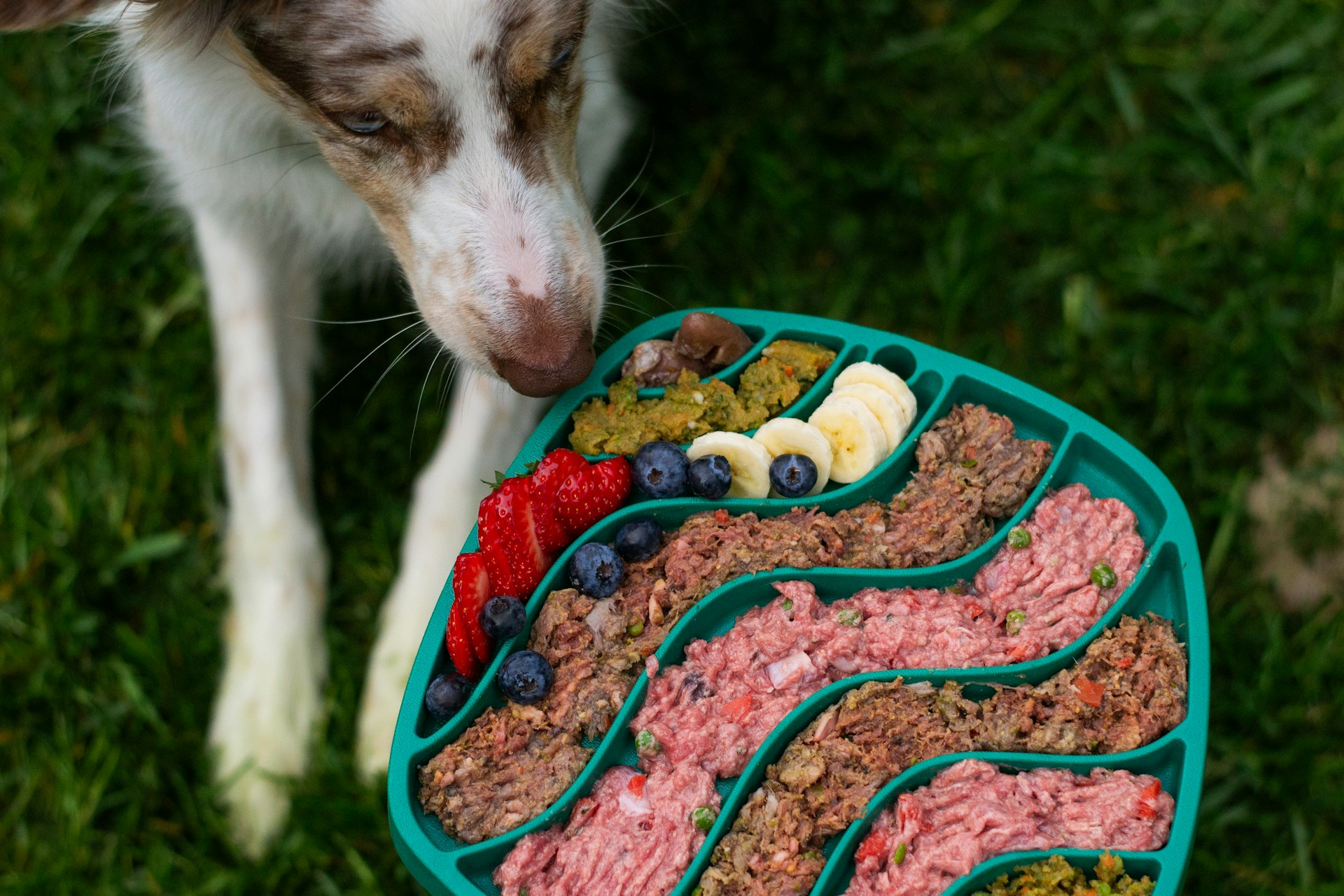Making homemade dog food is a rewarding way to ensure your pup gets nutritious, delicious meals tailored to their needs. With rising pet food costs and concerns about commercial food quality, many pet owners are turning to DIY recipes. Homemade meals let you control ingredients, avoid additives, and cater to your dog’s preferences. This guide covers the benefits of homemade dog food, essential nutrients, budget-friendly recipes, and tips for safety and storage. Let’s explore how to keep your dog healthy and happy with dog nutrition made at home.
Benefits of Homemade Dog Food
Homemade dog food offers several advantages over commercial options. You can select fresh, high-quality ingredients, avoiding fillers like corn or artificial preservatives that may cause allergies or digestive issues. It’s ideal for dogs with specific dietary needs, such as food sensitivities or weight management concerns. Homemade meals can improve coat health, energy levels, and digestion, as you’re using wholesome ingredients like lean meats and vegetables. Plus, it’s budget-friendly when you use affordable staples like rice or chicken. Cooking for your dog also strengthens your bond, making mealtime a special experience.
Essential Nutrients for Dogs
Dogs need a balanced diet to thrive. Key nutrients include:
- Protein (20-30%): Sources like chicken, beef, or eggs support muscle growth and energy.
- Fats (10-20%): Healthy fats from fish oil or olive oil provide energy and promote a shiny coat.
- Carbohydrates (20-30%): Whole grains like brown rice or oats offer fiber and sustained energy.
- Vitamins and Minerals: Vegetables like carrots or spinach provide vitamins A and C, while calcium from eggshells supports bones.
Every meal should include a balance of these nutrients. Avoid toxic foods like onions, garlic, grapes, or chocolate. Consult a vet to ensure your recipes meet your dog’s needs, especially for puppies or seniors.
Simple, Budget-Friendly Recipes
Here are three easy, affordable homemade dog food recipes. Each serves a medium-sized adult dog (20-50 lbs) for one day. Adjust portions based on your dog’s size and activity level.
Chicken and Rice Delight
- Ingredients: 1 lb chicken breast (diced), 1 cup brown rice (cooked), 1 cup carrots (steamed), 1/2 cup peas, 1 tbsp olive oil.
- Instructions: Cook chicken in a pan until fully done. Mix with cooked rice, steamed carrots, peas, and olive oil. Cool before serving.
- Nutrition: High in protein, fiber, and healthy fats.
- Cost: ~$3-4 per batch.
Beef and Sweet Potato Mix
- Ingredients: 1 lb ground beef (90% lean), 1 large sweet potato (baked, mashed), 1 cup green beans (steamed), 1 tsp fish oil.
- Instructions: Brown beef in a skillet, draining excess fat. Combine with mashed sweet potato, green beans, and fish oil. Cool before serving.
- Nutrition: Rich in protein, vitamins A and C, and omega-3s.
- Cost: ~$4-5 per batch.
Turkey and Oatmeal Feast
- Ingredients: 1 lb ground turkey, 1 cup rolled oats (cooked), 1/2 cup spinach (chopped), 1 tbsp ground eggshell (calcium).
- Instructions: Cook turkey until no pink remains. Mix with cooked oats, spinach, and eggshell powder. Cool before serving.
- Nutrition: Balanced with protein, fiber, and calcium.
- Cost: ~$3-4 per batch.
Feed 1-2 cups per meal, twice daily, adjusting for your dog’s weight. Always check with your vet before starting a new diet.
Storing Homemade Pet Food Safely
Proper storage keeps homemade dog food fresh and safe. Cook meals in batches for 3-4 days to save time. Store in airtight containers in the fridge for up to 3 days. For longer storage, freeze portions in freezer-safe bags or containers for up to 3 months. Label each batch with the date to track freshness. Thaw frozen food in the fridge overnight and warm slightly (not hot) before serving. Discard any food that smells off or shows signs of mold. Always wash hands, utensils, and surfaces after handling raw ingredients to prevent contamination.
Consulting a Vet for Balance
While homemade dog food is nutritious, it’s easy to miss key nutrients without expert guidance. A veterinarian or pet nutritionist can review your recipes to ensure they meet AAFCO standards for complete and balanced nutrition. They can recommend supplements, like calcium or fish oil, if needed. Regular vet check-ups monitor your dog’s weight, coat, and energy to confirm the diet’s effectiveness. This is especially important for dogs with health conditions like allergies or kidney issues. For more DIY pet food advice, visit Friends With Tail.
Final Thoughts
Homemade dog food is a fantastic way to provide your pup with healthy, affordable meals. By understanding their nutritional requirements, trying simple recipes, and prioritizing safety, you can keep your dog thriving. Always consult your vet to ensure your homemade diet is balanced and tailored to your pet’s needs. With these tips, you’ll enjoy the satisfaction of cooking for your furry friend. Check out Friends With Tail for more dog nutrition ideas and keep your pup wagging with joy.

